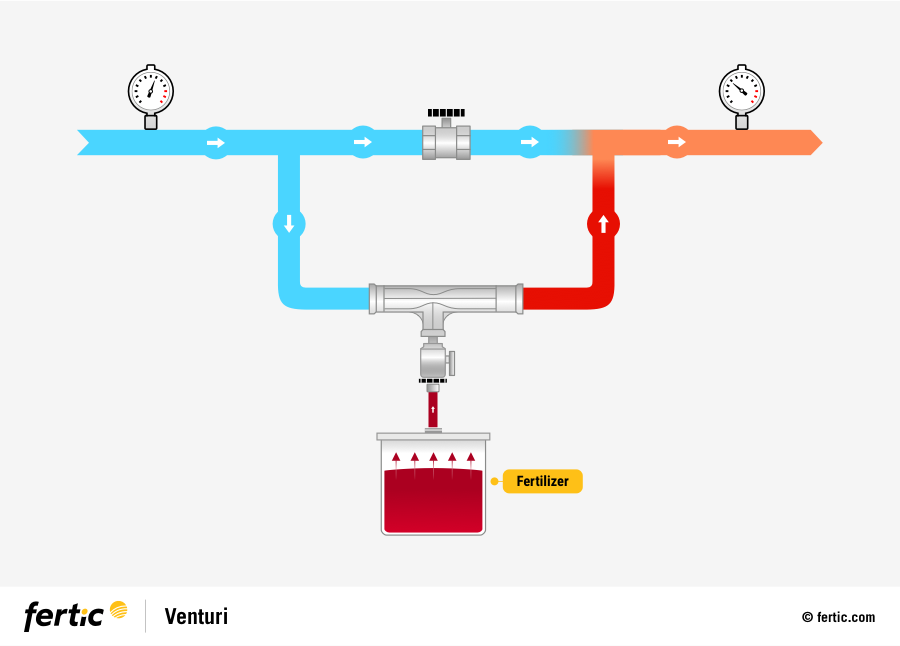Have you ever noticed how a simple change in the diameter of a pipe can alter the dynamics of a fluid? This principle is not only fascinating, but it is also the basis of the Venturi effect, a phenomenon that has revolutionized systems from medicine to agriculture.
What is the Venturi?
The Venturi is a system that leverages a physical phenomenon to inject liquids into a main water flow without the need for additional pumps. The key is in a special piece, the Venturi irrigation scheme, designed to narrow the pipe at a specific point. As the liquid passes through this narrower section, its speed increases while its pressure decreases, creating a vacuum that sucks another liquid from a reservoir.
How does the Venturi system work?
The operation of the Venturi is based on principles of hydrodynamics. As it passes through the narrow section, the water flow experiences a pressure reduction. This change allows the Venturi system for fertigation to be efficient in mixing liquid fertilizers with irrigation water, without requiring additional energy for its operation.

Advantages of Using Venturi in Agriculture
The Venturi system offers several advantages that make it attractive for use in agriculture:
- Economic Cost: Compared to other injection systems, Venturi is notably cheaper.
- Simple Installation: It does not require major modifications to the existing infrastructure, facilitating its installation for fertilization.
Disadvantages to Consider
Despite its benefits, there are certain disadvantages that must be taken into account:
- Pressure Loss: The system requires a significant pressure reduction to operate, which can be challenging in already established irrigation networks.
- Flow Regulation: The amount of liquid injected is difficult to adjust precisely, which can be problematic in applications requiring exact dosages.
- Pressure Dependence: The system’s efficiency decreases with higher inlet pressures, limiting its use in certain contexts. Load losses greater than 1 bar are needed to start its operation, and routine operation must be done with losses of 30% to 50% in networks of at least 2.5 to 3 bar. Low energy performance.
Is Venturi Right for You? Venturi Systems vs. Dosing Pumps
When evaluating injection systems for fertilizers and chemicals in irrigation, it is crucial to understand the key differences between Venturi systems and dosing pumps. The Venturi system uses a reduction in water pressure in a narrow section to suck chemicals into the water stream, while dosing pumps inject these materials directly with controlled precision through a pump. This precise control is vital in applications that require exact proportions to optimize crop growth and minimize waste.
Unlike Venturi systems, which can cause pressure losses affecting the efficiency of irrigation, dosing pumps maintain constant pressure, which is essential for large installations. Thus, the choice between a Venturi system and dosing pumps will depend on the need for precision in dosing, the size of the installation, and the desired efficiency in irrigation coverage. Carefully evaluating these considerations will help maximize the effectiveness and efficiency of the investment in fertigation.




